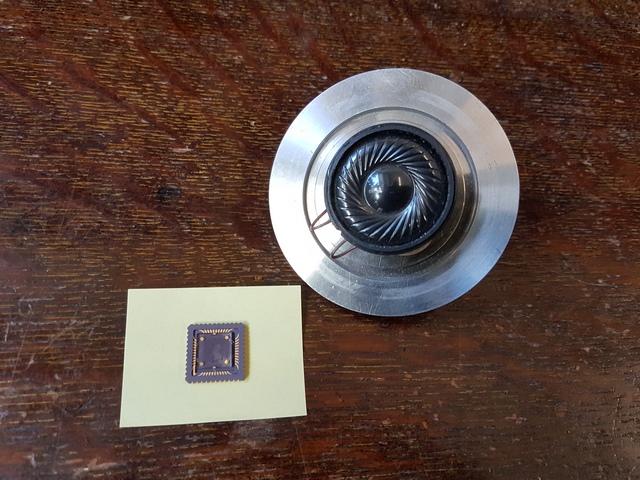UK team uses graphene to convert heat into sound
Researchers from Exeter University have developed a graphene speaker that creates sound thermoacoustically, converting heat into sonic waves.

(Credit: David Horsell/University of Exeter)
Speakers usually generate sound through mechanical means, with coils or membranes physically pushing air. The new device, described in the journal Scientific Reports, has no moving parts. Instead, a layer of graphene is rapidly heated and cooled by an alternating electric current. This thermal variation causes the air to expand and contract, creating sound waves.
Although using heat to generate sound is not new, the Exeter team claims it is the first to demonstrate that the process allows different frequencies to be mixed, amplified and equalised, all within a millimetre-sized device. According to the researchers, the ability to generate complex sounds without physical movement could open up new areas of technology, such as smartphone screens that deliver sound as well as pictures.
"Thermoacoustics has been overlooked because it is regarded as such an inefficient process that it has no practical applications,” said lead author Dr David Horsell, senior lecturer in Exeter’s Quantum Systems and Nanomaterials Group.
Register now to continue reading
Thanks for visiting The Engineer. You’ve now reached your monthly limit of news stories. Register for free to unlock unlimited access to all of our news coverage, as well as premium content including opinion, in-depth features and special reports.
Benefits of registering
-
In-depth insights and coverage of key emerging trends
-
Unrestricted access to special reports throughout the year
-
Daily technology news delivered straight to your inbox










UK Enters ‘Golden Age of Nuclear’
The delay (nearly 8 years) in getting approval for the Rolls-Royce SMR is most worrying. Signifies a torpid and expensive system that is quite onerous...